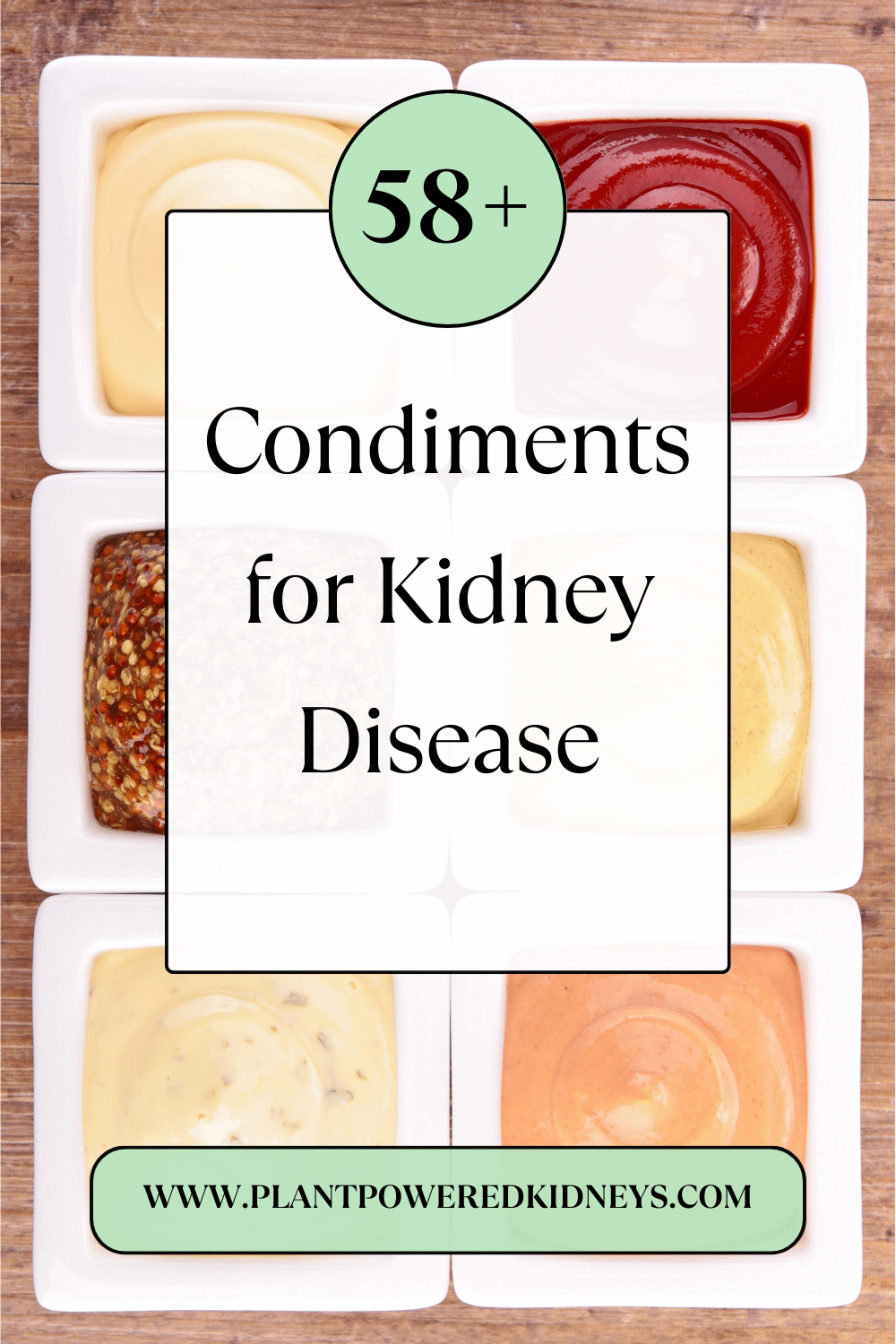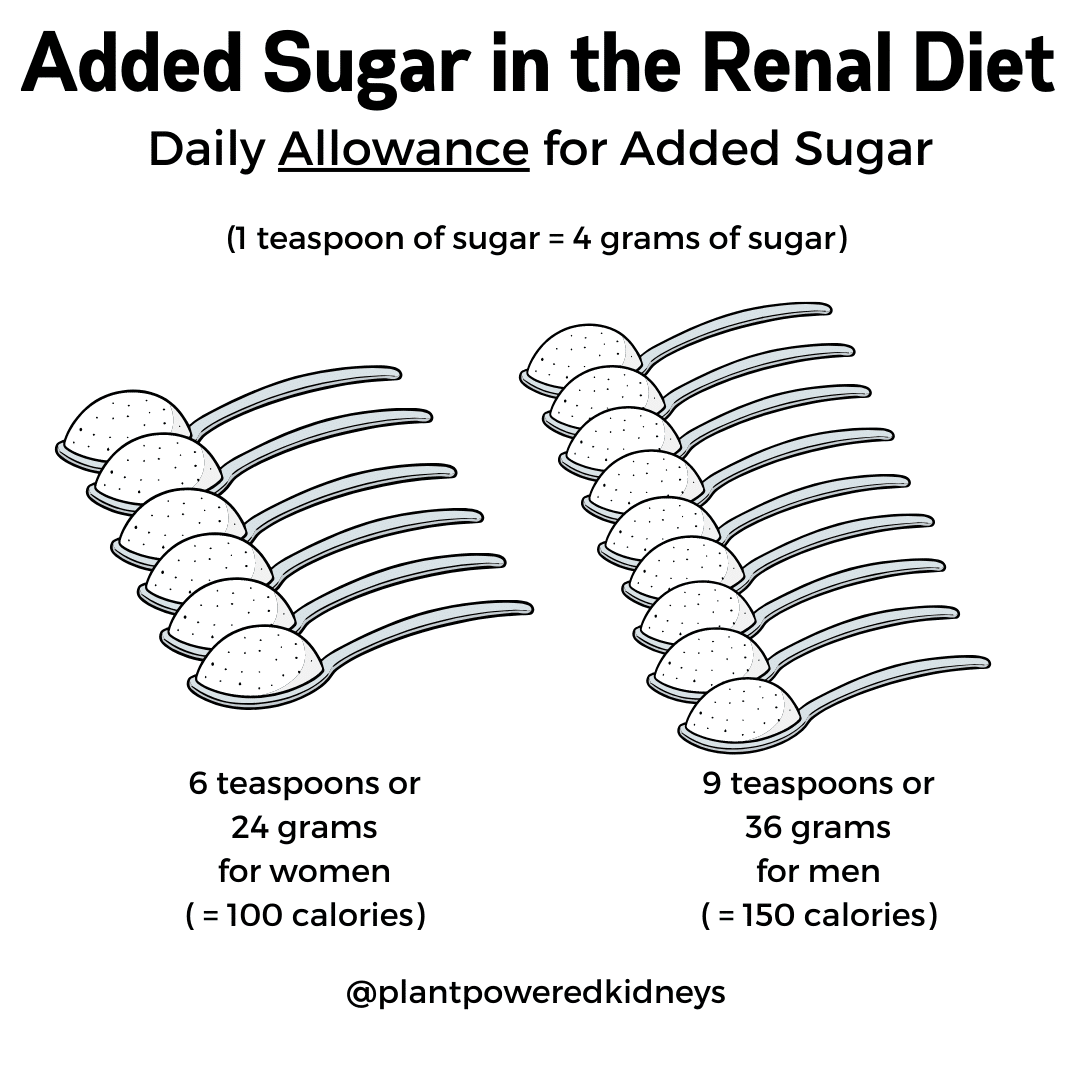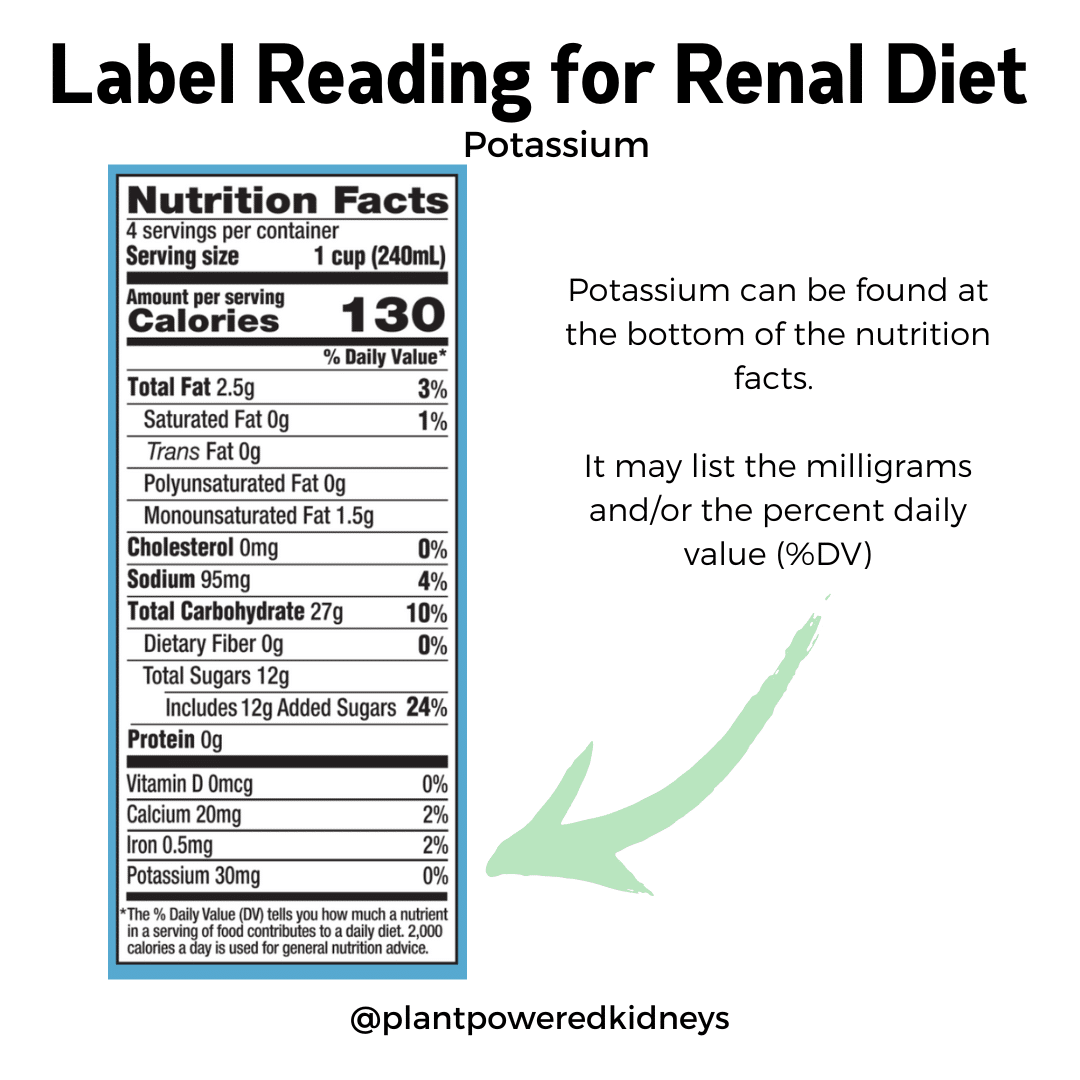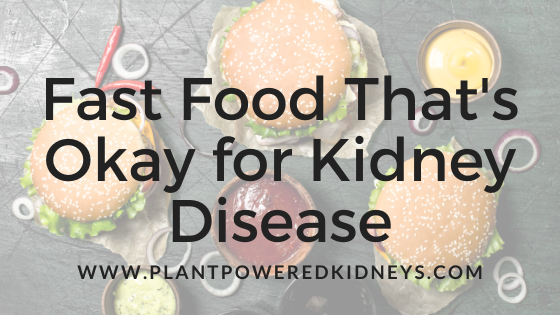If you’re a kidney patient, there’s a good chance you’ve been making some diet changes. The renal diet can be quite stressful, and oftentimes seems downright bland and boring. However, it doesn’t have to be that way. Condiments are a great way to add flavor to a meal. Plus, they can be so versatile and affordable. In this article, we’ll review what to look for when it comes to choosing condiments for kidney disease. We’ll also provide you with the ultimate list of condiments for kidney disease.
Table of Contents
Condiment Label Reading for Kidney Patients
One of the best things to do when it comes to finding a good assortment of condiments is to read the labels.
Here are the things to focus on when it comes to finding the best condiments for kidney disease.

Serving Size
Condiments will generally have a small serving size.
For example, a dressing or sauce may have a serving size of 1 or 2 tablespoons.
This is very important to look at and understand.
That is because all of the nutrients covered below will be based on the amount in the serving size.
Fats
Many condiments will include fats in the ingredients. Fats are a very important part of a renal diet.
Fats provide us with calories. Calories give us energy. Everyone, including kidney patients, need energy.
There are two categories of fats: healthy and unhealthy fats.
Healthy Fats
Healthy fats include unsaturated fats. For example, monounsaturated and polyunsaturated fats are both healthy fats.
These types of fats can be found in oils, nuts, seeds, and even avocados.
Food labels are not required to list healthy fats.
However, some products may include the amount of monounsaturated or polyunsaturated fats on their nutrition labels.
Unhealthy Fats
Unhealthy fats, on the other hand, are saturated fats and trans fats.
Both of these fats increase the risk of heart disease, stroke, heart attack, and other health conditions when eaten in high amounts.
Saturated fats can come from a variety of sources, including animal meats, dairy products, and even some plants like coconut oil and palm oil.
Current dietary guidelines recommend limiting saturated fat to 10% of daily calories.
However, the American Heart Association has even stricter recommendations of limiting 5% to 6% of calories from saturated fat.
Trans fats can be either natural or artificial.
Animal meats and dairy products can have a small amount of trans fats. However, these amounts are generally low enough to be rounded down to zero on labels.
Artificial trans fats are created by changing the fat molecule in a process called hydrogenation.
Saturated fats will be included on a nutrition label, even if there are none in the food.
On the other hand, artificial trans fats will not be listed as they are no longer recognized as safe.
Sodium
As you may know, sodium is a very important nutrient for kidney patients to be aware of.
The general dietary guidelines for sodium is to aim for 2,300 milligrams (mg) at most per day.
This is the amount of sodium for the percent Daily Value, or % DV, on labels.
In some cases, kidney patients may need to limit it to 2,000 mg or even 1,500 mg per day.
These different amounts will come from your nephrologist or renal dietitian.
When it comes to finding good condiments for kidney disease, this is a great place to determine if it’s okay or not.
Try choosing condiments that are as close to no sodium as possible.
You will find many that do have some sodium. Stick to no more than 120 milligrams of sodium, or 5% DV.
You’ll find there are plenty of options that will fit in this range, like all of our low-sodium hot sauce suggestions.
Added Sugars
Next on our nutrition label reading for condiments for kidney disease is added sugars.
This is found under the Total Carbohydrates section of the nutrition label.
Added sugars are often used to balance acidic ingredients in condiments like vinegar, soy sauce, or tomato bases.
That being said, it’s still important to be mindful of how much added sugar condiments can provide if we’re not careful.
General guidelines are to limit added sugars to no more than 10% of daily calories.
Again, the American Heart Association is a bit more strict with recommendations.
They suggest limiting added sugars to 100 calories or 25 grams per day for women.
And for men, it’s no more than 36 grams or 150 calories per day.

Therefore, choosing a condiment with the lowest amount of added sugar possible is going to be the best for kidney patients.
This allows you to enjoy your added sugars in other fun, enjoyable ways like our kidney-friendly desserts.
Potassium
Finally, we get to potassium. Many kidney patients have concerns about potassium.
In some cases, this is important. This is because late-stage and dialysis kidney patients may need to be on a low-potassium diet.
However, not all kidney patients need to limit potassium.
In fact, getting enough potassium – even with kidney disease – may be important in protecting kidney function.
Potassium will be listed on the Nutrition Facts Label towards the very bottom.

It is required to be included on nutrition labels. However, older products may not have it.
Or, the potassium content could be listed only in %DV or only in milligrams.
Either way, choose low-potassium condiments that are 200 milligrams or less ( 4% DV) if on a potassium restriction.
If not, you may not need to choose low-potassium condiments.
Be sure to also read the ingredient list of the condiments. Potassium additives are becoming more and more of a concern, especially for kidney patients.
Phosphorus
Our last nutrition label review for kidney disease is phosphorus.
Phosphorus is important for kidney patients to be aware of as it affects kidney, heart, even skin health.
It’s recommended that adults get about 700 milligrams of phosphorus per day.
However, adults eat nearly twice that amount.
Kidney patients are generally recommended to follow a low-phosphorus diet with an emphasis on limiting or avoiding phosphate additives.
Phosphorus will not usually be included on the nutrition label as it’s not required.
So to find condiments for kidney disease, read the ingredients list and try to avoid or limit any condiments that include phosphate additives.
This means any ingredient with -PHOS- included.
Examples include:
- PHOSphoric acid
- Dicalcium PHOSphate
- Sodium hexametaPHOSphate
Doing this will be a very healthy step towards protecting your kidney health.
Condiments for Kidney Disease: The Ultimate List
Now that we have covered the bases of what to look for on the nutrition label and ingredient list, let’s dive into the condiments for kidney disease.
This is a very comprehensive list.
While you don’t need to include all of them, this may get you thinking about other ways to add more flavor and variety to your renal diet.
- Ketchup
- Mustard
- Dijon Mustard
- Spicy Brown Mustard
- Whole Grain Mustard
- BBQ Sauce
- Mayonnaise
- Yogurt
- Soy Sauce
- Coconut aminos
- Hummus
- Tartar Sauce
- Balsamic Vinegar
- White Wine Vinegar
- Red Wine Vinegar
- Champagne Vinegar
- Apple Cider Vinegar
- Orange
- Lemon
- Lime
- Fresh & Dried Herbs
- Hot Sauce
- Tabasco
- Chili Sauce
- Sriracha
- Sweet Chili Sauce
- Sweet & Sour Sauce
- Garlic Chili Oil
- Salsa
- Sesame Oil
- Aioli
- Relish
- Pickled Veggies
- Kimchi
- Sauerkraut
- Marinara Sauce
- Chimichurri
- Pesto
- Cocktail Sauce
- Teriyaki Sauce
- Steak Sauce
- Peanut Sauce
- Hoisin Sauce
- Buffalo Sauce
- Jam
- Jelly
- Peanut Butter
- Almond Butter
- Cashew Butter
- Macadamia Nut Butter
- Chutney
- Mint Jelly
- Ranch Dressing
- Horseradish
- Wasabi
- Gochujang
- Honey
- Maple Syrup
Common Questions about Condiments for Kidney Disease
Here are some questions we have received from kidney patients when it comes to choosing condiments for kidney disease.
Is mayonnaise good for kidney disease?
Mayonnaise is made from egg yolks and oil. As discussed above, there are healthy and unhealthy fats because of these ingredients.
Choosing a mayonnaise that uses olive oil or avocado oil can make for a good mayonnaise.
This will also help reduce the amount of saturated fat and increase the amount of polyunsaturated and monounsaturated fat in the mayo.
Additionally, egg yolks are rich in B vitamins and healthy fats.
One tablespoon of mayonnaise provides about 100 calories, but very little amounts of potassium and phosphorus.
Therefore, if you’re looking to add more calories to prevent unintentional weight loss, or enjoy a summer pasta salad, mayonnaise can be a great thing to include.
Is ketchup bad for your kidneys?
Ketchup is probably one of the most common condiments for kidney disease.
It is so versatile and used in many recipes. Not to mention, it’s a barbeque staple.
One tablespoon of ketchup provides just 17 calories. And even though it’s made from tomatoes, it has just 48 milligrams of potassium.
That being said, if you were to go heavy-handed on ketchup, it could become a high potassium food rather quickly.
However, ketchup can be notorious for added sugars. Because this has become a concern, though, many companies now make no-added-sugar ketchup options.
So just like the other condiments, be sure to read the labels. You’re bound to find a ketchup that can fit your renal diet.
What about the potassium in hummus?
Actually, hummus isn’t a high-potassium condiment.
While different variations and brands of hummus may have different potassium amounts, standard hummus has only 97 milligrams of potassium per 2 tablespoons.
And when paired with a low-potassium vegetable, it’s definitely possible to fit into a low-potassium renal diet.
Not to mention the other nutritional benefits of hummus like fiber, plant protein, and even iron.
Summary
The old renal diet used to be very bland and boring. However, by adding in condiments, you can provide more flavor and variety with ease.
To find condiments for kidney disease, review the nutrition label and ingredients.
Aim for as little added sugar and sodium as possible. Potassium may be present, so stick to 5% DV or less per serving.
Avoid potassium and phosphate additives as much as possible.
With so many options in the grocery stores, you’re bound to find plenty of condiments for kidney disease that will not only fit into a renal diet, but also help you enjoy your food even more.
If you have another condiment in mind that isn’t on this list, share it in the comments section below.


